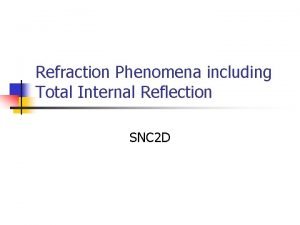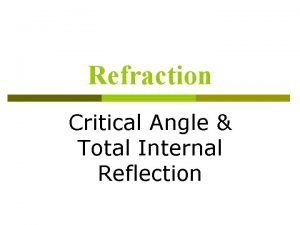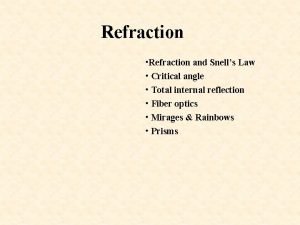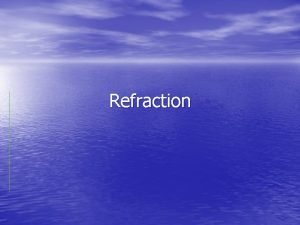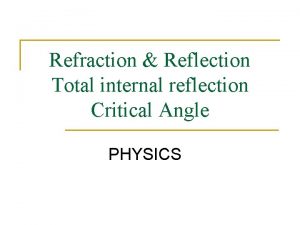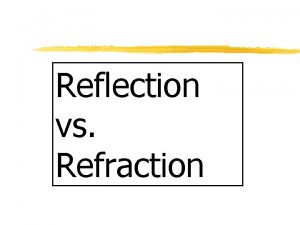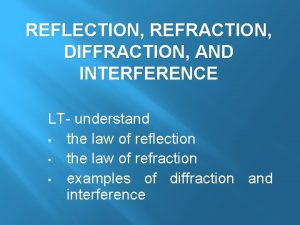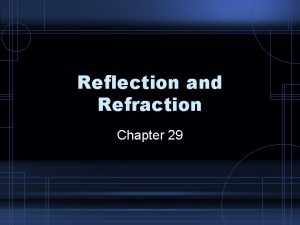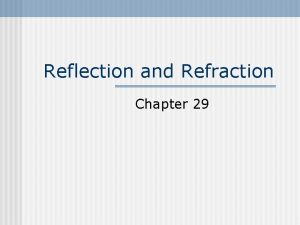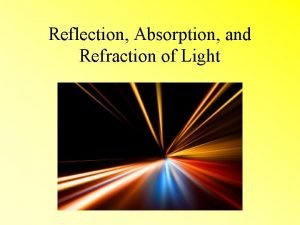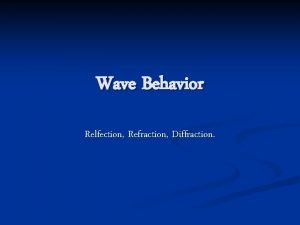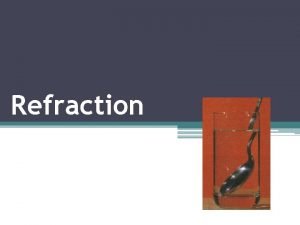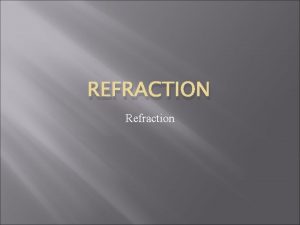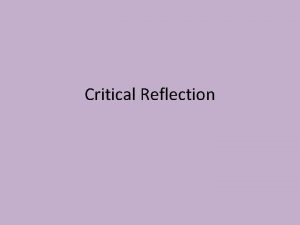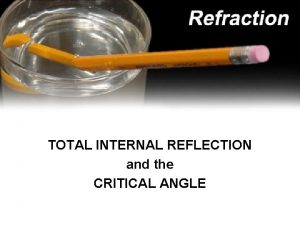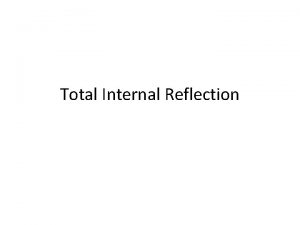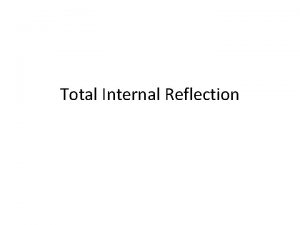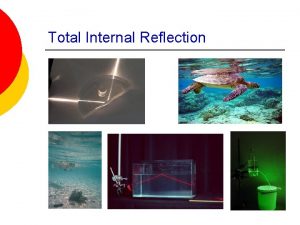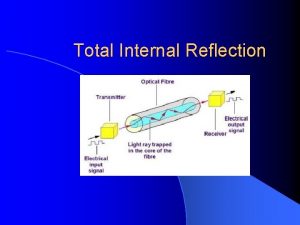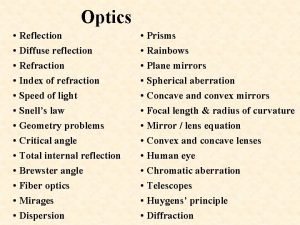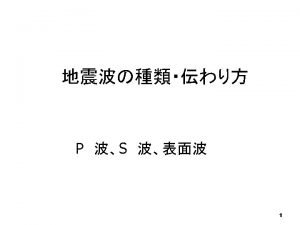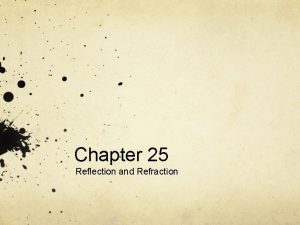Refraction Critical Angle Total Internal Reflection Total Internal
















- Slides: 16

Refraction Critical Angle & Total Internal Reflection

Total Internal Reflection: p When light travels from one medium to another, refraction occurs, BUT also some reflection. p When light travels from a medium of higher to lower refractive index, light is reflected to a greater extent. p As angle of incidence increases, reflected ray gets stronger & refracted ray gets weaker.

Total Internal Reflection: p Until the angle of refraction reaches a maximum of 90 o (i. e. it’s along the surface of the medium) p At this point, refraction ceases & all light is reflected back Total Internal Reflection p The angle of incidence at which TIR occurs in the critical angle.

Refraction & reflection Air Glass R i r Air Glass Calculating the critical angle is easy since the angle of refraction is 90 o!!! R Refraction along medium surface & reflection i r Total internal reflection Air Glass i r



Calculate the critical angle for the interface between water (n=1. 33) & air (n=1) water air Recall: critical angle will only exist if going from high n to low n

Calculate the critical angle for the interface between crown glass (n=1. 52) & air (n=1) glass air

A jeweler wants to displace her diamonds in such a way that they capture the light & sparkle as much as possible. What is the incident angle that light must strike inside the diamond to ensure TIR? diamond air Recall:

Glass n=1. 5 Glass has a high critical angle (42 o), so light escapes Diamond n=2. 42 Light undergoes TIR before exiting Diamond n=2. 42 Diamond cutters Light exits b/c want TIR so must angle incidence cutthan at right less critical anglesangle plus want to allow light to exit the top

The angle of incidence of light in water & heading towards air in 50 o. Calculate the angle of refraction. water air The angle of incidence is greater than the critical angle, so TIR occurs, therefore no refraction

p Substances with higher indices of refraction refract the light to a greater degree & thus have lower critical angles

Applications: p Optical Instruments n Contain prisms that allow TIR Diamond cutters p Fiber Optics p Rain sensor wipers p Etc… p

Mark is lying by the side of a swimming pool and looking down at a light source located at the bottom of the pool, which is 1. 35 m deep. The refractive index of the water is 1. 33. If the light ray is to enter Mark's eye, at what maximum distance d from the side of the pool can the light source be located?

If further away, angle of incidence increases beyond critical angle & TIR occurs!

Use table on page 61
 Total internal reflection definition
Total internal reflection definition Critical angle and total internal reflection
Critical angle and total internal reflection Snell's law critical angle
Snell's law critical angle At what angle of incidence is the angle of refraction 90
At what angle of incidence is the angle of refraction 90 Total internal refraction
Total internal refraction Critical semi critical and non critical instruments
Critical semi critical and non critical instruments Spaulding classification system
Spaulding classification system Reflection vs refraction
Reflection vs refraction Reflection refraction diffraction interference
Reflection refraction diffraction interference Refraction vs diffraction
Refraction vs diffraction Chapter 29 reflection and refraction
Chapter 29 reflection and refraction Refraction of sound
Refraction of sound Reflection refraction transmission and absorption of light
Reflection refraction transmission and absorption of light Reflection wave behavior
Reflection wave behavior What is your reaction of the poem
What is your reaction of the poem Refraction examples
Refraction examples Bill nye reflection and refraction
Bill nye reflection and refraction
